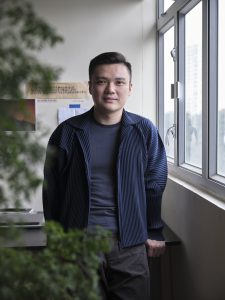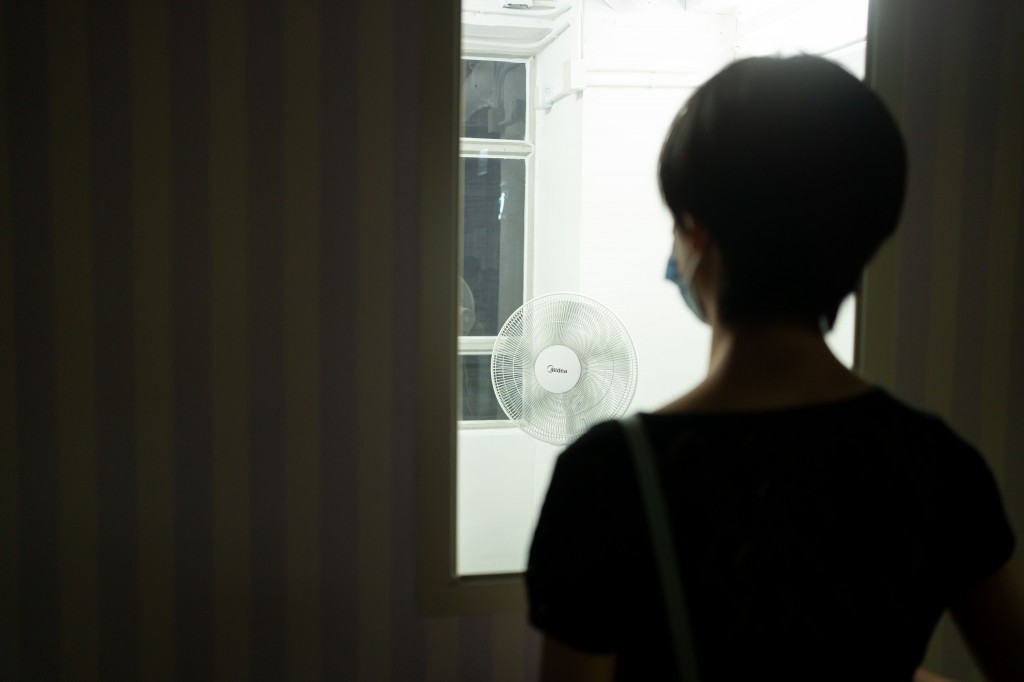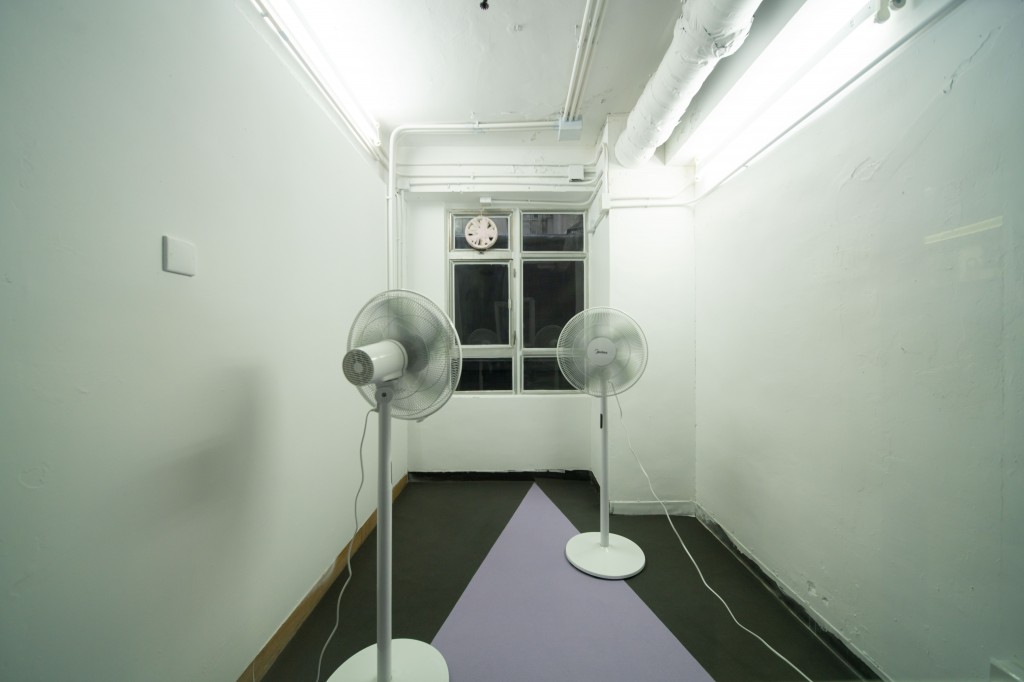artist support programme (ASP) alumni: Dave CHOW Yui-wang
「藝術家支援計劃」獲選藝術家:周睿宏

photo by South Ho
閱讀完整訪談 (中文) >>>
–
Interview excerpt :
Dave Chow Yui-wang (b.1993, Hong Kong) received his Bachelor of Arts degree from the Academy of Visual Arts, Hong Kong Baptist University in 2015. He is especially interested in the meaning of objects and the physicality of materials. His works display and distil his everyday experiences by appropriating, transforming, and assembling ready-made objects and images. Dave currently lives and works in Hong Kong. He held his first solo exhibition, ‘Switch on the Television When the Sun Sets’ during his artist residency programme in Chicago (Experimental Sound Studio, Chicago, 2018). His works have also been exhibited in various exhibitions, including ‘EQUILIBRIUM’ (Foo Tak Building, Hong Kong, 2018), ‘Observe / Scrutinise / Perceive’ (Gallery Exit, Hong Kong, 2018), and ‘again and again’ (common room & co., Hong Kong, 2018). Dave Chow Yui-wang was supported by soundpocket’s Artist Support Programme 2017–18.
Personal website >>>
–
10.6.2021 (Thur) | 12:30
Fu Lee Loy Shopping Centre, Hong Kong
◎ Spark of a site-specific installation: “Still” in ‘10 Years of ASP’
soundpocket: You mentioned the interaction between medium and environment. How is your artistic practice affected by a full-time working or studio working environment? Or, once you decide on an exhibition venue, will it affect or inspire the formation of an artwork?
Dave: I think the exhibition venue will have the greatest influence on an artwork. Taking “Still” in ‘10 Years of ASP’ as an example, I found the space of Fu Lee Loy Shopping Centre kind of raw or rough during my first couple of visits – there is so much information that you receive from the space. This somehow motivated me to do an artwork, which in its form and status are totally different from the space itself, creating a sense of disparity. I like the sense of contrast; therefore, I chose the light pinkish purple (a colour that I assumed wouldn’t appear in Fu Lee Loy Shopping Centre) as the main visual tone of the artwork.
soundpocket: Could you tell us the idea behind “Still”? Was this idea already in your mind, or is it a site-specific artwork?
Dave: It’s half and half. Initially, I wished to portray some feelings that have been accumulating, yet not knowing how to deal with them through an artwork. When I first visited the exhibition venue at Fu Lee Loy Shopping Centre, and saw the grey wall beyond this window, I can feel something “clicked” within me. It’s that grey wall beyond a window, and from that “Still” gradually developed into its current form.
◎ Facing the dilemma, guarding the inner
soundpocket: Could you tell us more about your feelings towards “the grey wall beyond a window”?
Dave: During site visits, I was thinking how I would feel if a place I spent most of the time had a window, but there was only a grey wall beyond that window. You could not deny the existing landscape beyond the window; you could feel the sense of day and night, yet all you could see would just be a grey wall. I found this somehow responded to the experiences and state in the recent past. It isn’t the worst scenario; it is definitely less oppressive than a confined space with only walls. Yet it would be equally oppressive in the long term. This is the reason for me to decide to exhibit my artwork in this corner.
soundpocket: There are two fans in the artwork. They are completely isolated within the room, and the audience standing outside the closed room and looking in cannot feel their ventilation at all. Why do you have this kind of manipulation?
Dave: I wanted to separate the senses of sight, touch, and hearing. Even if you can see the fans are in operation, and you can tell air is flowing in the room, yet you can’t see the ventilation nor sense the wind. This imitates the state of my life recently, which is that of a feeling of disengagement. Everyday different things happen around us in society, yet I feel just like an outsider and can’t make any changes about the absurdity of it all. I have been constantly reflecting on my role and position, but I could never figure out an answer. Therefore, I try to portray this sense of distance in my artwork.

photo by Wong Ka-wing
◎ Comparison: The tension and balance
soundpocket: Why did you decide to use two fans? There are also many doubled objects in your previous artworks. Were you aware of this preference?
Dave: I probably realized this preference after I completed the artwork with televisions (“Did you catch all that? NO but I am doing good”, 2018) or toothbrushes (“Softly”, 2018). I didn’t realize it until I was updating my personal website and saw there are doubled objects in most of my artworks. When I gave this a second thought, I recalled some thoughts that I had had: I find it very interesting if I see there are two orange roundish rubbish bins placed together in parallel; but if there are three rubbish bins, I would start thinking that they must serve a recycling function. Two identical objects inspire me with many personal associations, and I pay more attention to the relationship between them.
This relationship between two things also gives me a sense of tension. If it’s more than a duo, I will consider it as balance rather than tension. If it’s applied to human relationships, a one-to-one relationship would be more likely projected as an intimate relationship, which I find most attractive. If you’re developing a relationship with more than one person, it might already be “political”. The genuine interaction between interpersonal relationships moves me the most.

photo by Wong Ka-wing
◎ Experiencing different materials: The appeal of the unknown and ambiguity
soundpocket: You mentioned finding glass an appealing material, have you been trying to do some experiments or artworks with it?
Dave: There is a sense of clearness in glass. Glass can separate our sight and other sensations, it also contains a sense of the unknown and ambiguity. It is a strong yet fragile material, we cannot precisely predict the threshold of pressure that glass can handle, or the distribution of the decisive spots where it will break. This uncertainty echoes the lack of influence we have towards reality. I find this sense of danger in an unknown status very appealing. Let me take glass as a metaphor for emotional relationships: the process of producing glass means that it undergoes extremely high temperature and pressure, yet it is still fragile somehow, or relatively fragile in certain circumstances, which is very much like the emotions of humans. The richness of one’s life experiences could not be a standard for how much pressure one can handle; once it exceeds the threshold, he or she might collapse. This is the association I had with glass as an artistic material. Its texture also fits with my aesthetic preferences, which means I keep trying to make artworks with glass.